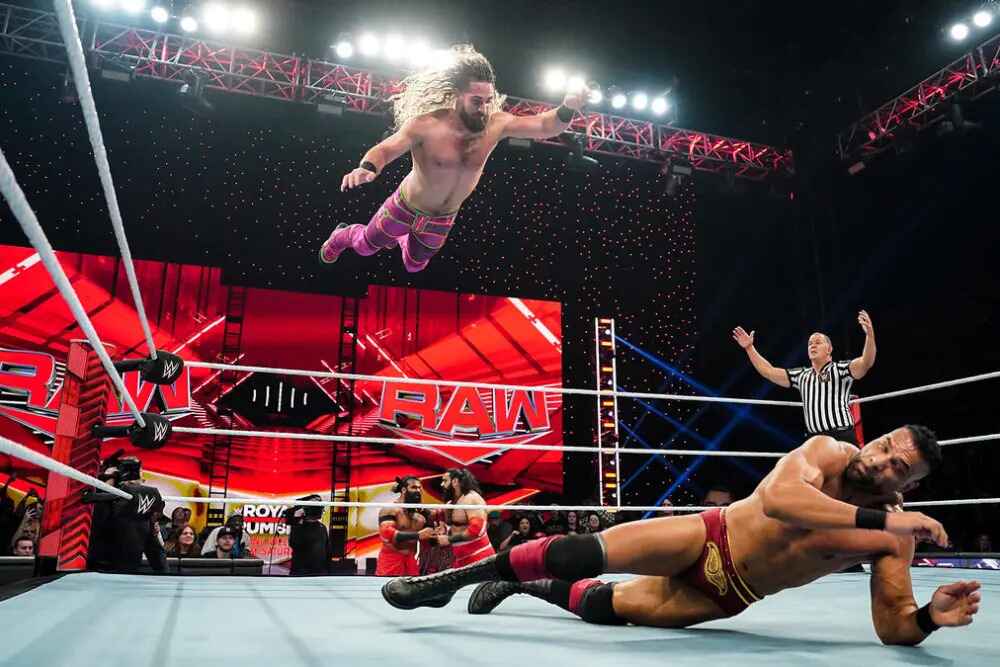For every kid growing up in the 2000s, WWE was the show. Long before streaming platforms and algorithms tried to figure out our tastes, we already knew what we liked: chaos, larger-than-life characters, and a whole lot of action. WWE delivered it all wrapped in sweat, smoke, and steel chairs. If you are someone who used to watch WWE, you know the craze it had, how kids used to mimic the fighters, and how everyone wanted to give an RKO to their enemies.
Wrestling? No. This Was Shakespeare with Suplexes
But here’s the thing—WWE was never just about wrestling. Sure, the slams and finishers were fun, but what truly kept us coming back were the stories. This was theatre in tights. A place where betrayal hurt more than punches, and redemption arcs were played out in front of millions. It was drama at its peak, just with elbow drops and entrance pyros.
Watching The Undertaker rise from a coffin was scarier than any horror movie. Edge cashing in his Money in the Bank felt more thrilling than a heist film. And when John Cena’s theme music hit? Instant goosebumps, logic be damned.
The Golden Era of Chaos and Charisma
WWE at its best was a weekly blockbuster. The Attitude Era wasn’t just a phase; it was a movement. Stone Cold Steve Austin stunned bosses, The Rock served verbal smackdowns, and DX made rebellion look cool. It was outrageous, unpredictable, and gloriously addictive. Even the commentary team added fuel to the fire. When Jim Ross screamed, “Bah Gawd!” you knew something insane had happened.
Heartbreaks That Hurt More Than Hits
Let’s not forget the emotional weight behind the punches. Shawn Michaels retiring, Ric Flair wasn’t just a match—it was a cinematic goodbye. Seth Rollins turning on The Shield? That hurt like a betrayal in a crime drama. These weren’t just characters—they felt like people we grew up with. And when they lost, we thought it. When they won, we celebrated as if it were personal.
Real or Scripted? We Didn’t Care
WWE made us suspend disbelief in the best way possible. We knew it was scripted, but that didn’t matter. When Jeff Hardy dove off a 20-foot ladder, it wasn’t about realism—it was about emotion. It was art. The kind of art that made a generation of kids jump off their beds, holding imaginary belts in their hands.

Women Who Changed the Game
It wasn’t just a boys’ club either. Superstars like Lita and Trish Stratus pushed boundaries in the early 2000s, and later, the Four Horsewomen—Charlotte, Sasha, Becky, and Bayley—redefined what it meant to be a female wrestler. Suddenly, women weren’t just side characters—they were headliners.
The Good, The Bad, and the Bizarre
Of course, not everything was perfect. Some storylines were flat-out bizarre (we still don’t talk about the Katie Vick angle). But even those strange moments became part of WWE’s rich, chaotic history. It’s the kind of universe where even the bad parts add character.
Backstage Was Just as Wild
Beyond the ring, real-life controversies added another layer of intrigue. The Montreal Screwjob. CM Punk’s pipebomb. Backstage politics that rivalled Game of Thrones. Being a WWE fan meant being part of a world where reality and fiction constantly blurred—and that made it all the more exciting.
New Faces, Same Heart
Even today, WWE keeps evolving. With Triple H steering creative and fresh faces like Roman Reigns, Cody Rhodes, and Rhea Ripley leading the charge, the brand is still finding ways to surprise us. It may not feel exactly like it did in the old days, but the heart is still there.
Also Read…
Why WWE Will Always Matter
WWE has always been about more than just wrestling. It’s about storytelling. About heroes and villains, pain and triumph, friendship and betrayal. It’s a place where you can lose yourself for a few hours—and maybe remember what it felt like to be a kid again.
So, whether you still watch every week or only catch clips on YouTube, one thing’s for sure—WWE didn’t just entertain us. It shaped our idea of what entertainment could be.
Writer – Subham Choudhary
